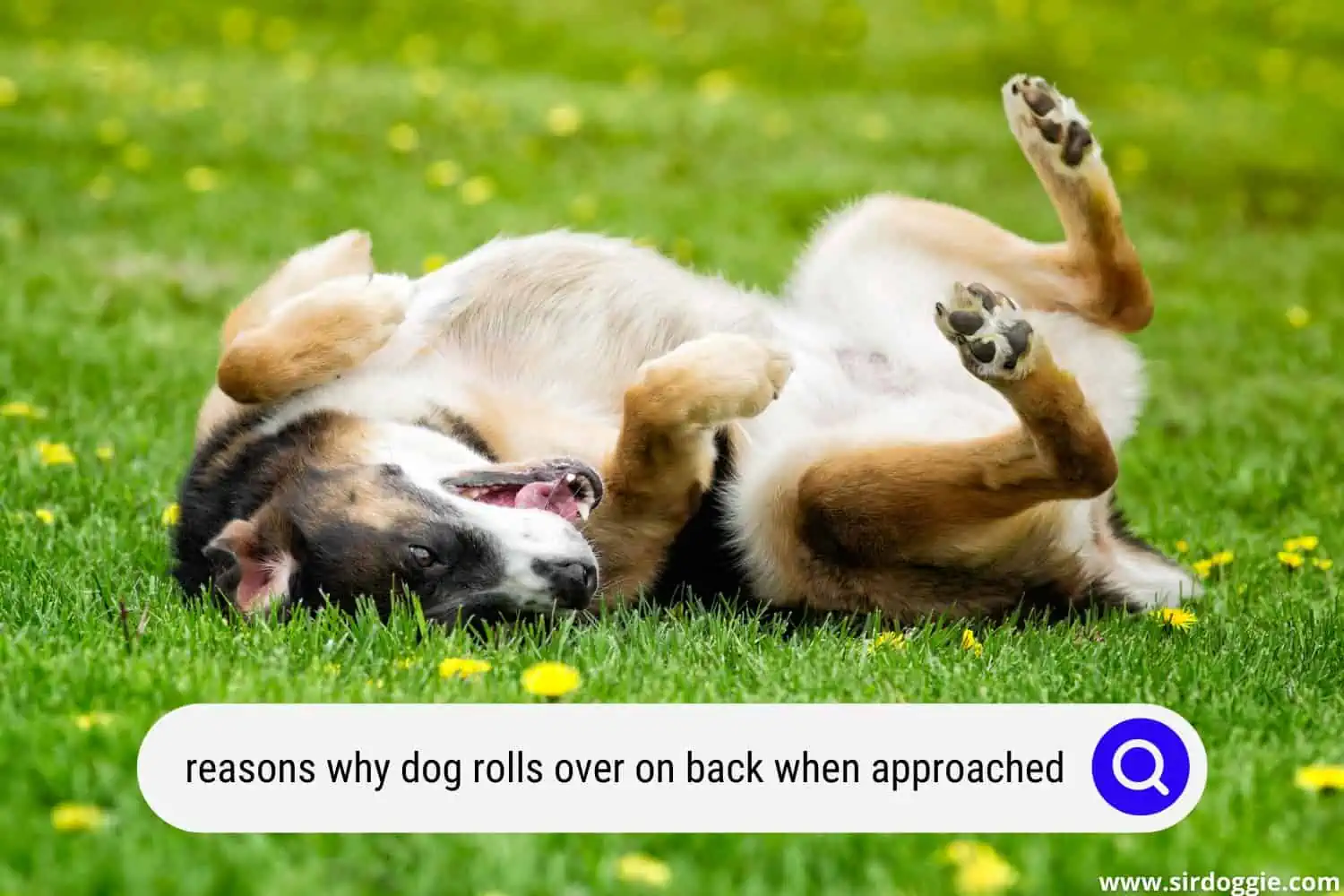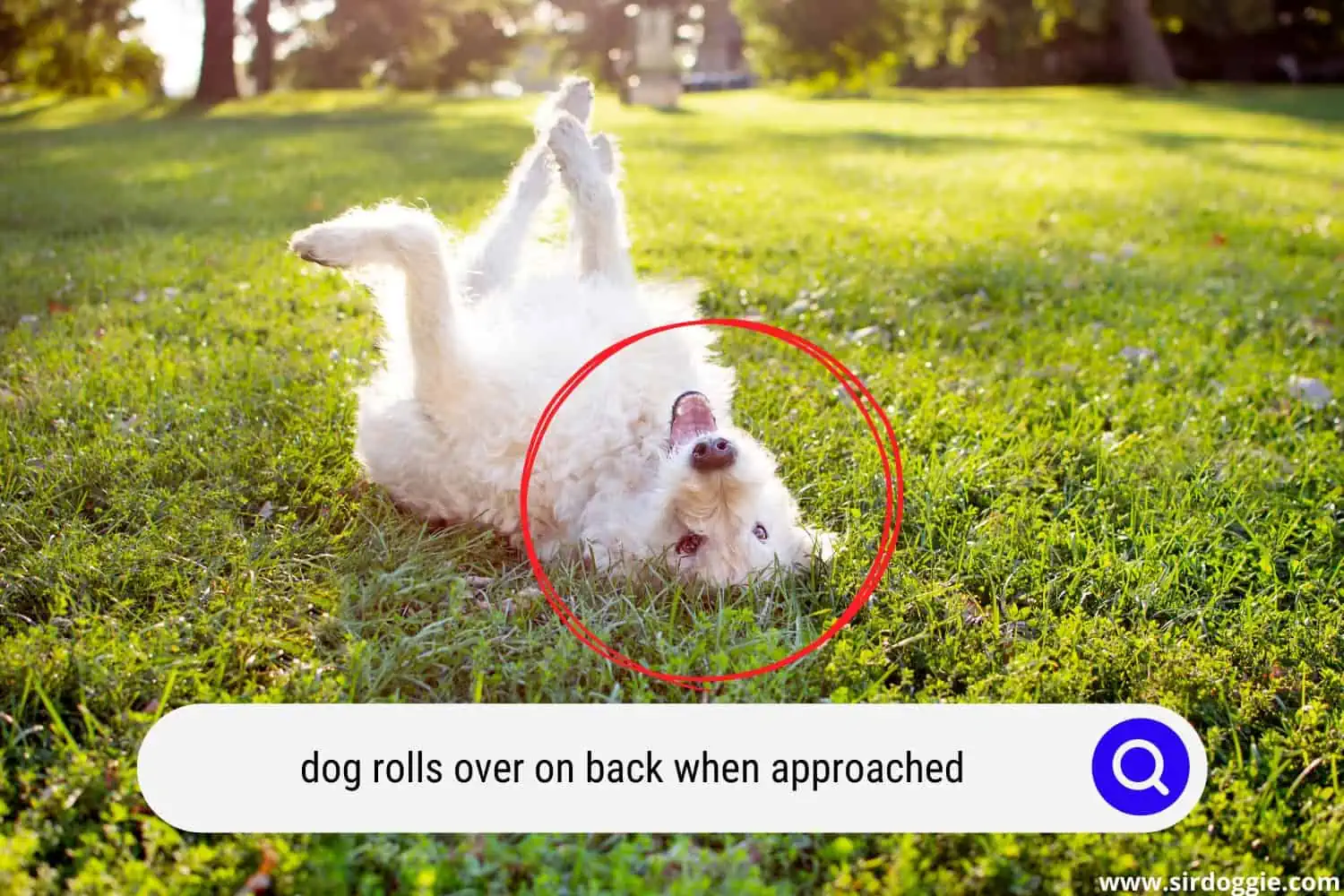Dog Rolls Over On Back When Approached: 7 Most Common Reasons
Anybody who has a fluffy canine companion at some point notices that their dog rolls over on its back when approached. It is, by all means, a very peculiar habit that we, humans, may not understand at first. While it may look extremely cute and amusing, back-rolling usually sends a very particular message to the dog owner. Showing tummy is also a great “crowd-pleaser” and becomes an instant hit with the guests visiting a hound’s sanctuary.
Since canines can’t speak human, they would use barking and their body language to convey codes they want their pet parents to “crack.” The more a dog owner learns about his/her pooch, the better their communication will be. They would establish a strong bond by understanding the needs as well as respecting each other’s boundaries. But how did this weird canine behavior start altogether?

Why Does Dog Roll Over On Back When Approached?
As any pet parent knows, dogs originated from their wolf ancestors. Wolves are used to living in packs and there’s always one designated pack leader who is dominating the entire group. Other wolves would show respect as well as submission to the Alpha male by rolling over when it approaches.
Another good reason why wild dogs would show their belly is if they are being threatened by another animal. Rolling over sends a very specific signal: “I’m not ready for a fight, please don’t hurt me!”
Or, on the contrary, they would use rolling back as a trick to confuse their animal opponent while protecting themselves from being bit. This position is excellent for re-grouping, regaining strength, and attacking when the other fluffy creature least expects it.
While these strategies are accurate for the animal world, what about humans? Will a dog roll over on its back when approached by its two-legged counterpart?
Dog Rolls Over On Back When Approached: Most Common Reasons
The answer to the above question is yes, in certain instances, they will do so. What exactly are they?
- Inviting to Play: yep, pooches just love being silly! A dog would lay on its back when it sees a pet parent, wanting attention. It is a very typical puppy behavior. An owner may observe his/her hound rolling from side to side in excitement, wiggling its paws, and smiling from ear to ear with its tongue hanging out. Please, do it a favor, and carve a few minutes in the daytime bonding with your precious playful fella. These are the moments you will always cherish when your pup grows up and will not be so spontaneous. Showing Respect: as with the above-described example with the wolves, a domesticated hound hasn’t lost the “pack mentality” it inherited in the wilderness. It will regard its pet parent as an Alpha if an owner positions himself/herself as a dominant figure. A pooch needs structure as well as a leader to follow. Having both of these in place ensures a dog’s good behavior and mental and physical health.
- Asking for a Belly Rub: just like some humans like body massages, pups love belly rubs. Gentle strokes around the abdominal area help them relax while bonding with their masters. So please, devote a few minutes to massaging your pup’s tummy. You may be showered with wet kisses and cuddles in return as canines are very appreciative creatures.
- Your Hound Trusts You: any dog is vulnerable while on its back. It is much more difficult to defend itself against predators while being rolled over. However, as previously described, wolves do it sometimes to disorient their enemy. If your dog lays on its back when it sees you, that’s a great sign! It means that it trusts and feels comfortable around you. Sometimes you may notice a furry pal might even sleep on its back. This is an indicator of the “my home is my castle” type of thinking. A dog knows that this is its habitual environment, with its smell, and belongings scattered around. This is the place to be, this is home.
- A Skin Irritation Bothers a Dog and Is Hard-to-Reach: it is much easier for a two-legged to scratch an itch than it is for a four-legged counterpart. Human arms are more flexible and can twist in directions canine paws can’t. Hence, they can’t always get to an itchy spot on their backs or bellies. This is why dogs roll on their backs and let their pet parents do the work. It will not take a lot of an owner’s time. But, in the end, there will be one more happy pooch on the planet.
- Always inspect your baby for any skin rashes, as it may be an allergic reaction to something. If you spot any skin abnormalities, it may be a good time to visit a veterinary specialist.
- Keeping Their Body Temperature in Check: compared to people who have various ways to cool off at their disposal, dogs are limited in what they can do. Sure, they will pant when it’s hot out, letting the outside air circulate throughout their bodies. Or they can lick themselves for refreshment purposes as well as find a shade to hide from the sun. Still, it may not be enough on a scorching hot summer day. That’s when dogs show their bellies to let the breeze float and provide the necessary relief from the heat. Pay attention to your dog’s behavior: if it looks like they are excessively panting, give it fresh cold water with some ice, provide shade, and let them stay by the air conditioner.
- A Pooch Sufferers From External Parasites: this is a less amusing back-rolling reason, requiring a parent’s immediate attention. Fleas, ticks, and mites are no fun to have for either people or their furry friends. Especially if there’s no immediate way to get them off your body. Again, as in the case of canines, their paws are not as flexible to scratch hard-to-reach places, like their backs. That’s when rolling over and rubbing against the carpet, ground, wood or any other hard surface comes into play. It is not always an effective parasite eliminator, but it does work temporarily to help relieve the itch. Remember to always inspect your furry pal’s coat to detect any pest activity. Be sure to invest in some good flea and tick prevention medication like Seresto or Frontline to protect your pal all year round.

Curl-Up
As weird and perplexing as a dog rolling on its back when approached might be, it is a very common and normal four-legged behavior. Here we’ve discussed the main reasons why pooches might exhibit that. While the majority of them are nothing to worry about, the rest are signs that something is wrong, like parasite infestation or a skin condition requiring attention.
Make sure to examine your pal once in a while if it starts engaging in excessive scratching and rolling-on-its-back episodes. Other than that, use your pooch’s belly-exposing as a sign for attention and some much-needed TLC.
Happy bonding!

Family Dog Expert Author
Hi there! I’m Stuart, a devoted dog lover and family dog expert with over a decade of experience working with our furry companions. My passion for dogs drives me to share my knowledge and expertise, helping families build strong, loving bonds with their four-legged friends. When I’m not writing for SirDoggie, you’ll find me hiking, playing with my beautiful dog, or studying music.